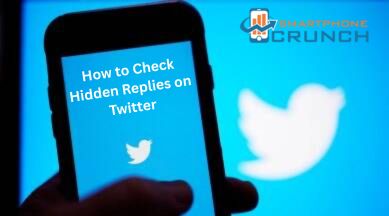Future of Foldable Phones: Hype or Real Innovation?
In the ever-evolving world of smartphones, foldable phones have emerged as one of the most visually striking innovations. Since their debut, these devices have generated both excitement and skepticism. Some users see foldables as the next big leap in foldable phone technology, while others dismiss them as just another gimmick. But where do they truly stand in 2025? Let’s dive deep into the future of foldable phones and determine whether they represent real innovation or just temporary hype.
📱 The Rise of Foldables: A Timeline
The concept of foldable phones began as early as the mid-2010s, but it was Samsung’s Galaxy Fold launch in 2019 that really started the trend. Early models had teething issues—fragile screens, awkward hinges, and sky-high prices. But in the years since, the market has matured. By 2025, almost every major smartphone brand—Samsung, Motorola, Oppo, Xiaomi, and even Apple (rumored)—has either launched or is planning a foldable device.
🔍 What Makes Foldables Unique?
Unlike traditional smartphones, foldables use flexible OLED displays that allow them to bend, either like a book (horizontal fold) or vertically (clamshell). This enables a device to be compact when folded and expansive when opened. You can carry a tablet-sized screen in your pocket—ideal for media consumption, multitasking, and productivity.
Beyond design, foldables bring a fresh wave of innovation in mobile design. From dual-screen functionality to app continuity and multi-window multitasking, they offer capabilities previously limited to laptops or tablets.
⚙️ Advancements in Foldable Technology
In 2025, foldables are far more durable, lighter, and efficient than their earlier counterparts. Newer models boast:
- Water and dust resistance (which was once considered impossible)
- Improved hinge mechanisms with over 200,000 folds tested
- Ultra-thin glass (UTG) replacing plastic screens for better durability
- Longer battery life thanks to dual battery systems
In addition, companies are now integrating high-end specs—flagship processors, pro-grade cameras, and ultra-fast charging—making foldables not just a design marvel but performance beasts too.
💸 The Price Barrier
One of the biggest criticisms against foldable phones has been their price. While the average user might find a ₹1.5 lakh phone unrealistic, brands are now launching foldables under ₹70,000. As production costs fall and demand rises, we can expect mid-range foldables to become mainstream in the next few years.
🧠 Are Users Ready?
Despite tech advancements, user adaptation is slower. Many are comfortable with slab phones and don’t feel the “need” for foldables. Questions like “Will the crease bother me?” or “What if it breaks?” still exist. However, the same skepticism once surrounded large smartphones or even touchscreens. With time, acceptance may increase—especially among professionals, gamers, and content creators.
💬 The Hype vs. Reality Debate
So, is the buzz surrounding foldables just marketing hype?
Not entirely. Foldables solve real problems: screen size vs portability, productivity on-the-go, and even replacing tablets or laptops in some cases. But they are not perfect. Until they become more affordable, more rugged, and more universally supported by apps, they will remain a niche product.
Much like any early-stage tech, foldables are evolving. In fact, we’ve already seen prototypes of rollable and slideable phones—signs that foldables are just the beginning of the foldable phone technology era.
🕵️♂️ A Real-Life Use Case (And a Tech Tip!)
Imagine working remotely while traveling. A foldable gives you dual screens for emails, Zoom, and note-taking—no laptop needed. While checking Twitter updates for work, did you know there’s a way to uncover replies that aren’t visible directly? Here’s a quick trick:
✅ how to check hidden replies on Twitter:
- Open the tweet
- Tap on the three dots (⋯)
- Select “View hidden replies” to see what’s been moderated
Sometimes, you’ll find important information there—especially if you’re a brand or journalist!
📲 Conclusion: Hype Today, Standard Tomorrow?
Just like dual cameras or notches became standard, foldables could too. They’re not a passing fad but a stepping stone toward futuristic smartphone experiences. We might soon see hybrid phones that fold, roll, and expand!
So, the future of foldable phones: hype or real innovation? The answer is: both. The hype created awareness, and now the real innovation is catching up. Whether you jump on the foldable train today or wait a few years, one thing is certain—phones are no longer just smart, they’re becoming shape-shifters.




Leave a Reply
Want to join the discussion?Feel free to contribute!